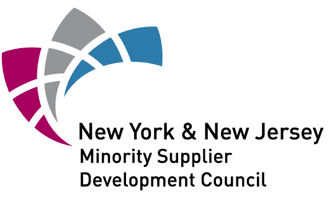The Impact of UX and Page Speed on Rankings and Conversions: Why It Matters
Imagine you click to a website and it’s a total mess: Layers upon layers of complex menus, nothing is where it’s supposed to be, and everything takes forever to load. What do you do on a site like that? Probably leave immediately and never look back.
Well, you’re not alone. Users and search engines, like Google, think the same thing about cluttered, poorly optimized websites. How can you please both?

Why User Experience (UX) and Site Speed Matters to Your Customers
If your site loads too slowly or isn’t easy to use, your potential customers simply won’t use it. Data shows that nearly 42% of all visitors will leave a website with poor functionality1, and are significantly less likely to engage with your content and convert.
And, when it comes to site speeds, these statistics get even more intense. 88.5% of web designers consider slow load times to be the number one reason for consumers ditching a site2. With 47% of all internet users expecting load times of 2 seconds or less3 the question is, how does your site stack up?
Why UX and Site Speed Matters to Search Engines
When websites have good UX and speed, it’s not just potential leads that notice—search engines do too. As website speed and design improve, so does user engagement, especially in regards to conversions. A site that loads in 1 second sees doubles the conversion rate on average compared to a site that loads in 5 or more4. Additionally, a well-organized site reduces bounces by helping customers find what’s important on your website.
When customers stay longer on your site, engage more, and convert at higher rates, it signals to search engines that your website is high-quality and worth recommending. This gives you a leg up on page rankings. Good UX and site speeds are a must to include as part of your SEO strategy.
How Can You Improve?
For a good user experience, make sure visitors can easily find what they’re looking for, navigate the website easily, and complete their desired actions with minimal friction.
Here’s what we recommend prioritizing:
- Easy navigation: Visitors should be able to find what they’re looking for quickly and easily, with a clear and intuitive navigation menu.
- Clear and concise content: Content should be easy to read and understand, with a clear message and a logical structure.
- Mobile responsiveness: Visitors should be able to access the website easily on their mobile devices, with a responsive design that adapts to different screen sizes.
- Accessibility: Ensure that you have an accessible website for all visitors, including those with disabilities or using assistive technologies.
When it comes to site speed, what matters is less the content of your website, but how optimized it is to load on various devices.
This hinges on factors including:
- Image optimization: Large images can slow down your website. Optimize your images by compressing them or using tools to reduce their file size without sacrificing quality.
- Reliable hosting: Your website’s hosting provider can affect its speed. Choose a reliable hosting provider that offers fast loading times and minimal downtime.
- Content Delivery Networks (CDN): A CDN is a network of servers that store a copy of your website’s content. Utilizing one allows content to be delivered from the server closest to them, reducing the load time.
Putting the Pieces Together
To improve user experience, your site should be clear, easy to navigate, and made with accessibility and mobile devices in mind. Visitors being able to find what they need quickly, navigate effortlessly, and do what they’re there for without friction is a recipe for customer satisfaction and conversions.
When it comes to site speed, it’s crucial to make ensure your site can load quickly no matter where or how users are viewing it. Compressing images, choosing a reputable hosting provider, and leveraging CDNs can significantly improve load times and bring your site in line with the speed customers expect.
Incorporating UX and site speed improvements into your SEO strategy is essential for long-term success. By prioritizing these factors, you can provide a high-quality website that satisfies both users and search engines, resulting in better rankings, increased conversions, and ultimately, business growth.
References
- Peck, A. (2021, April 4). Website Redesign Checklist: 5 Trends to Consider. Top Design Firms. https://topdesignfirms.com/web-design/blog/website-redesign-checklist
- Sebastian, N. (2023, June 29). Website design stats and trends for small businesses: Goodfirms research. GoodFirms. https://www.goodfirms.co/resources/web-design-research-small-business
- Kissmetrics. (n.d.). How Loading Time Affects Your Bottom Line.
- Wiegand, M. (2022, April 20). Site speed is (still) impacting your conversion rate. Portent. https://www.portent.com/blog/analytics/research-site-speed-hurting-everyones-revenue.htm





